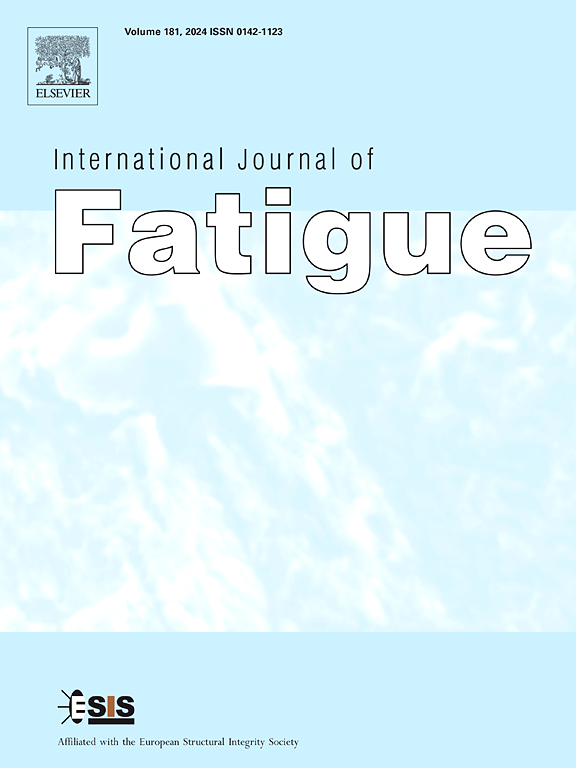Extension of low cycle fatigue life model to thermal aging for 20000 h of a low alloy steel
IF 6.8
2区 材料科学
Q1 ENGINEERING, MECHANICAL
引用次数: 0
Abstract
Axial low cycle fatigue tests were performed on the thermal aged low alloy steels (LASs). The fatigue life declined after thermal aging for 20000 h, characterized by diminished plastic strain amplitude, enhanced cyclic hardening, and reduced ductility. Post-fatigue fractography of the material after thermal aging revealed elevated dislocation density, dense dislocation pile-ups and tangles, which compromised carbide’s ability to block cracks and degraded the bainite phase, and further accelerated crack initiation and propagation. A previously established fatigue model based on the thermal aging parameter was extended to 20000 h and demonstrated sound applicability. Moreover, this model was embedded in a Physics-Informed Neural Network (PINN) framework to enhance the accuracy of fatigue life prediction. This study provides both data and guidance for LAS fatigue design in extended service applications.
将低合金钢低周疲劳寿命模型推广到20000h热时效
对热时效低合金钢进行了轴向低周疲劳试验。热时效20000 h后疲劳寿命下降,表现为塑性应变幅值减小,循环硬化增强,延性降低。热时效后材料的疲劳断口形貌显示,位错密度升高,位错密集堆积和缠结,降低了碳化物堵塞裂纹的能力,使贝氏体相退化,进一步加速了裂纹的萌生和扩展。将先前建立的基于热老化参数的疲劳模型扩展到20000 h,证明了良好的适用性。此外,将该模型嵌入到物理信息神经网络(PINN)框架中,以提高疲劳寿命预测的准确性。该研究为扩展服役应用中的LAS疲劳设计提供了数据和指导。
本文章由计算机程序翻译,如有差异,请以英文原文为准。
求助全文
约1分钟内获得全文
求助全文
来源期刊

International Journal of Fatigue
工程技术-材料科学:综合
CiteScore
10.70
自引率
21.70%
发文量
619
审稿时长
58 days
期刊介绍:
Typical subjects discussed in International Journal of Fatigue address:
Novel fatigue testing and characterization methods (new kinds of fatigue tests, critical evaluation of existing methods, in situ measurement of fatigue degradation, non-contact field measurements)
Multiaxial fatigue and complex loading effects of materials and structures, exploring state-of-the-art concepts in degradation under cyclic loading
Fatigue in the very high cycle regime, including failure mode transitions from surface to subsurface, effects of surface treatment, processing, and loading conditions
Modeling (including degradation processes and related driving forces, multiscale/multi-resolution methods, computational hierarchical and concurrent methods for coupled component and material responses, novel methods for notch root analysis, fracture mechanics, damage mechanics, crack growth kinetics, life prediction and durability, and prediction of stochastic fatigue behavior reflecting microstructure and service conditions)
Models for early stages of fatigue crack formation and growth that explicitly consider microstructure and relevant materials science aspects
Understanding the influence or manufacturing and processing route on fatigue degradation, and embedding this understanding in more predictive schemes for mitigation and design against fatigue
Prognosis and damage state awareness (including sensors, monitoring, methodology, interactive control, accelerated methods, data interpretation)
Applications of technologies associated with fatigue and their implications for structural integrity and reliability. This includes issues related to design, operation and maintenance, i.e., life cycle engineering
Smart materials and structures that can sense and mitigate fatigue degradation
Fatigue of devices and structures at small scales, including effects of process route and surfaces/interfaces.
 求助内容:
求助内容: 应助结果提醒方式:
应助结果提醒方式:


